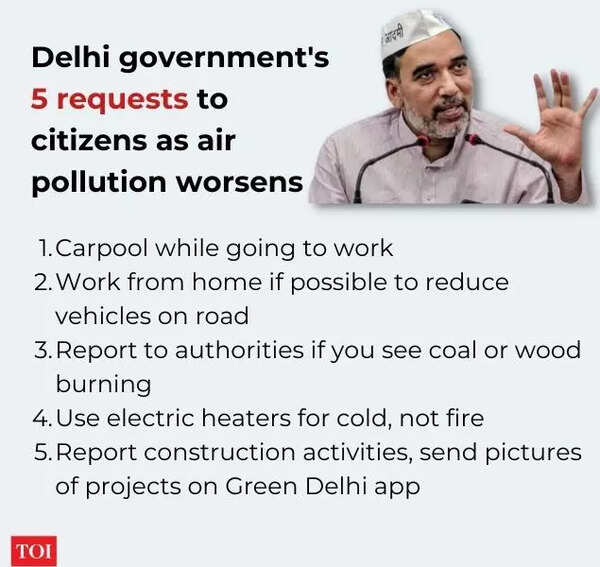On Friday morning, air quality in the national capital jumped to 472. In Noida and Gurugram it stood at 562 and 593, respectively, an abnormally high level. It meant that people were actually breathing smoke.
In some pockets of the city, the index exceeded 800, according to the results of the Delhi Pollution Control Committee.
According to the Center, a reading of more than 400 affects healthy people, with severe repercussions on those with existing illnesses.
Pushing the limits
The air quality in parts of Delhi is now consistently above 500, which is the maximum limit defined by the Center. Other than that, the air becomes severely toxic.
There are six AQI categories, namely Good, Satisfactory, Moderately Polluted, Poor, Very Poor and Severe.
The AQI considers eight airborne pollutants (PM10, PM2.5, NO2, SO2, CO, O3, NH3 and Pb) for which national ambient air quality standards are prescribed in the short term (up to a average of 24 hours).
An AQI between zero and 50 is considered “good”, 51 and 100 “satisfactory”, 101 and 200 “moderate”, 201 and 300 “poor”, 301 and 400 “very poor” and 401 and 500 “severe”.
On Friday, Delhi’s 24-hour average air quality index rose to 450, just a notch below the “severe plus” category.
According to the Center, an AQI in the severe category can cause a respiratory impact even on healthy people and a serious impact on the health of people with lung / heart disease.
Health impacts can also be experienced during light physical activity.
Because the air of Delhi is so poisonous
The main reason behind the bad air of Delhi is the stubble burning.
According to SAFAR (System of Air Quality and Weather Forecasting And Research), stubble burning contributed 34% to Delhi’s PM 2.5 pollution.
The burning of rice paddies after harvests across Punjab and other states persists every year despite efforts to persuade farmers to use different methods.
This is because farmers have to clear their fields before the rage season, and burning stubble is an efficient and faster way to do this.
The widespread burning of stubble in Punjab is actually a groundwater problem.
In Punjab, farmers are prohibited from planting paddy fields in May to prevent groundwater levels from dropping before the monsoons. Groundwater depletion is turning into a big problem in Punjab and paddy is a water-intensive crop.
Therefore, Punjab farmers can only plant paddy fields from mid-June onwards. This has a cascading effect.
Due to late sowing, crops are only harvested in late October / early November. This coincides with the start of the winter season in northern India, when wind speeds slow and temperatures drop.
If sowing took place in May, the crops would be harvested in September, which is windier and warmer in comparison.
Furthermore, most of Punjab’s farmers are poor and cannot afford machinery to remove stubble from the soil. They have no choice but to resort to the more economical solution of burning stubble.
The Delhi government intervenes
With air quality set to deteriorate in the coming days, the Delhi government has stepped in to implement curbs to alleviate the problem
Delhi Prime Minister Arvind Kejriwal, whose party also rules Punjab, where crop burning is rampant, said on Twitter that “the people of Punjab and Delhi are taking all steps at their level” to fight pollution. .

Delhi Environment Minister Gopal Rai has suggested a 5-point plan to reduce pollution. He will convene a high-level meeting on Friday to discuss the implementation of limits on polluting activities in the final phase of the Action Plan for the phased response.
(With input from agencies)
